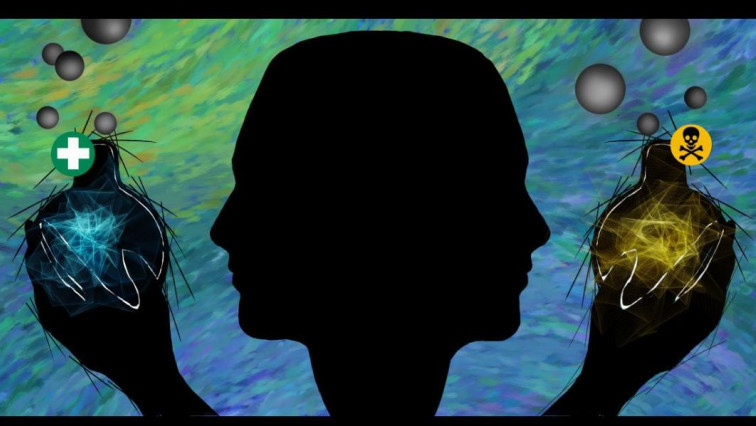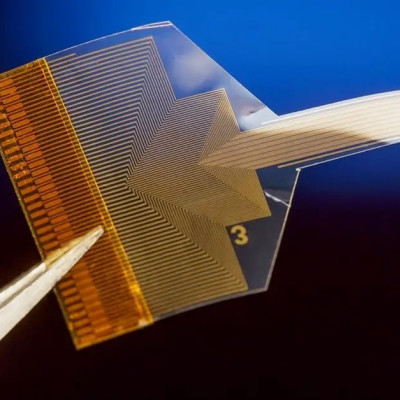We live in a world that cultivates eternal youth. The pharmaceutical market is full of new, shiny, “revolutionary” products, which are meant to put us in good shape and give us a pristine, young appearance, and long life in well-shape. Advertisements scream of various supplements, vitamins, or syrups, supposed to strengthen our immunity and help us fight diseases. The beauty industry offers more and more new, wonderful substances. Just to make us healthy, fit, and young.
As people become more aware of their health, they try to take better care of it. They buy various supplements and vitamins. Fear of getting sick or old is often exploited by the preachers of alternative medicine. They offer a so-called universal drug. A substance is supposed to cure headaches, normalize vitamin deficiencies, and treat all kinds of diseases, even cancer.
A universal cure for everything is an extremely tempting and comfortable prospect. Colloidal silver is considered as one of these magical substances, which is to be the source of eternal youth. Here, we will describe the ups and downs of these “amazing” and “ground-breaking” nanoparticles.
Silver treasure in medical treatment
Colloidal silver consists of charged silver nanoparticles suspended in a solution. The use of such a solution in medicine is dated back to 980 A.D. when it was used as a blood purifier.
Since that time it has been used as an antiseptic material for healing wounds, epilepsy, and even brain infections. It was also believed that silver enabled the connection of the brain with the Moon, giving the patient vital strength and energy. The XIX century brought the popularization of the use of colloidal silver in medicine, in particular in the treatment of fractures, skin ulcers, and in healing wounds.
Moreover, between 1900-1940, tens of thousands of people consumed it as they were informed that such treatment was perfectly safe. In the 1940s silver started to be used instead of antibiotics, and since then it has become a dietary supplement on the international market. Unfortunately, progress in medicine revealed the dangerous nature of colloidal silver.
Drug or dietary supplement?
In fact, colloidal silver is not a drug. Despite that, in the past, it was widely prescribed as a universal medicine for several diseases. Now, it is classified as a diet supplement. The difference between a drug and a diet supplement is that the drug contains various substances that have a pharmacological effect on our body, while a supplement does not.
The two also have different approval processes before they are allowed to be put into commercial use. Every drug sold in pharmacies has to be approved by the Food and Drug Administration (FDA, in the USA), European Medicines Agency (EMA, in Europe), or any other equivalent of such institution in the indicated area. While diet supplements do not have to be approved by the above-mentioned institutions, they just have to contain certain ingredients.
Drink it or not?
Some liquid supplement manufacturers promise that their supplements can do more than we can imagine. Are they covered in reality? Labels offer spectacular health improvement, spontaneous cure of all diseases, or immediate weight loss. Moreover, they claim that the product is absolutely safe. People always struggled with various diseases, and this will never change.
That is the reason that people are susceptible to blindly believing in magic presented in the supplement advertisements. What drives them? Mainly, the desire of being forever young and healthy. Is drinking colloidal silver to pursue these dreams worth it? For sure not! Let’s take a closer look at the science that stands behind this “magical” product.
Colloidal silver consists of microscopic particles or flakes of silver, that are suspended in a liquid. Some of them are so small that we cannot see them without a microscope. For that reason, they easily cross biological barriers. They may easily get to the bloodstream and every organ in our body.
The small size of the nanoparticles facilitates their spread in the whole organism. An average red cell in our blood is about 6-8 μm in length, while colloidal silver can be 10 or even 100 times smaller. That is why it enters tissues so easily. So, why would we want to pollute our blood with nanoparticles of the jeweler’s favorite metal? We wouldn’t recommend doing so.
Furthermore, metallic silver ionizes when exposed to moisture, and it releases biologically active silver ions (Ag+), which get in contact with body fluids. Our body does not need this heavy metal to function properly. Drinking liquids that contain silver can lead to the accumulation of the metal, which has multiple side effects.
Systematic ingestion of colloidal silver leads to serious health problems including heart diseases with various symptoms like chest discomfort, palpitations, and headaches. Moreover, this heavy metal accumulates in tissues, resulting in permanent skin discoloration, so-called Argyria.
This condition is caused by the direct intake of colloidal silver or intake of its compounds in which the silver forms dermal granules. Silver can aggregate in the soft tissues like the brain, eyes, kidneys, liver, spleen, or even bone marrow. But that is not the end of the very long list of problems associated with silver intake. So, the answer to the question “should I drink silver?” is “Never, ever drink it”.
Silver soldier
As far as we should avoid drinking colloidal silver, it can be beneficial when used externally. Recently, it has been widely used as a therapeutic option due to antibacterial, antifungal, and antiviral properties. Moreover, it has tremendous efficiency in air and water disinfection, groundwater/biological wastewater treatment, and even surface disinfection (from clothing to plastics). These properties give colloidal silver a wide use in industries and medical care.
For example, plasters filled with colloidal silver can be used to support the healing of wounds [14]. Silver has also been found use in cosmetics and bone implants [15,16]. Its wide application comes from the chemical properties of silver. It actively interacts with living organisms, affecting them. So, if colloidal silver kills all bacteria on our skin, why should it avoid “good” bacteria that are necessary for our gut? It kills them all, so it is not dedicated for internal use, as it can cause major disruptions in our organism.
Read the original article on Technology Org.







